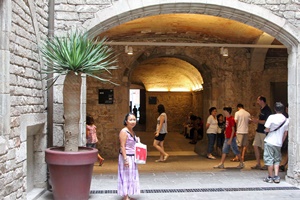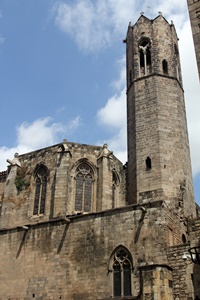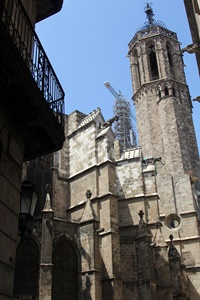We entered the Gothic Quarter without any firm plan as to what areas to visit, but on our map we noticed the presence of a Picasso Museum, and thought we would try our luck. Pablo Picasso, while born in Malaga in the south of Spain in 1881, lived in Barcelona with his family from 1895 to 1904, which were the formative years of what was to become his lengthy career. Barcelona’s Picasso Museum specializes in his output from these years, though works from other parts of his career can be seen here as well. Looking through the museum, it’s interesting to see his work progress from traditional-looking paintings by an obviously very talented teenager into what is known as his Blue Period. Or such is our understanding - as it turned out, our luck at the Picasso Museum was not good, as we found a very long line of people waiting to get in. Apparently tickets are available at the website, but we hadn’t planned ahead that far.
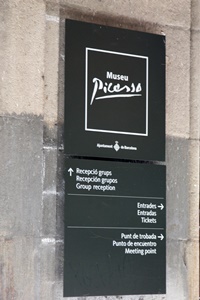
Museum Sign Med Lrg Xlg |
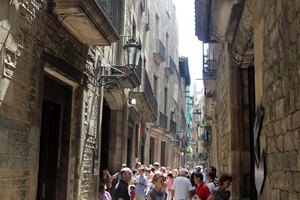
Entry Line Med Lrg Xlg |
We didn’t want to spend hours of our last day in Barcelona standing in line, so we passed on the museum for this visit. But there was a public area outside the exhibition space that was somewhat interesting in its own right. The museum is made up of five palaces from the 13th Century which have been renovated and joined together, and the public area is definitely atmospheric.
From the Picasso Museum we wandered around somewhat aimlessly, heading back in the general direction of the Cathedral. On the way we passed a shop that sold pastries and chocolate-based creations. We bought some chocolate and continued onward.
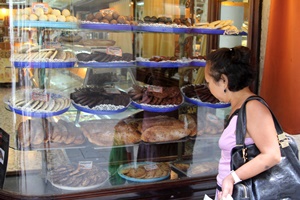
Nella Looking in Window Med Lrg Xlg |
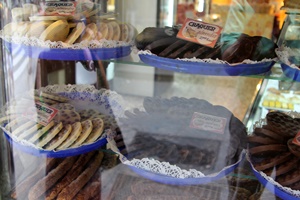
Chocolate Creations Med Lrg Xlg |
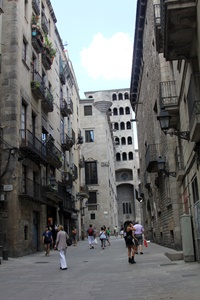
Carrer Veguer Med Lrg Xlg |
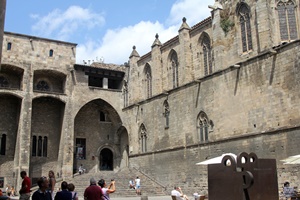
Plaça del Rey Med Lrg Xlg |
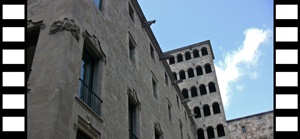
Torre Mirador del Rei Martí and Gargoyles MP4-Sml MP4-Med WMV-HD |
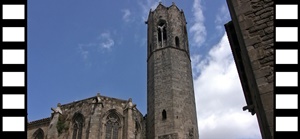
Nella and Plaça del Rey MP4-Sml MP4-Med WMV-HD |
It’s possible to see the insides of these buildings (for a fee), but we didn’t know what there was to see or how long it would take, and we had other priorities for the day. So we moved on.
From here it was a short walk to the apse portion of the Barcelona Cathedral. This was a vantage point that we hadn’t seen on our earlier visit.
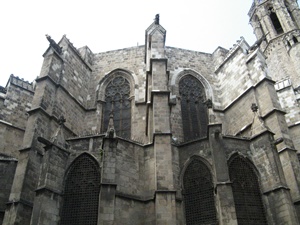
Cathedral Apse Med Lrg |
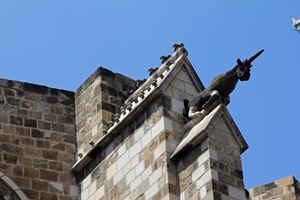
Gargoyle Med Lrg Xlg |
At this point we examined our priorities and found them to lie in two different directions. Nella was interested in seeing what the local merchants had to offer, and maybe executing a few transactions, and I was more interested in looking around in the harbor direction of La Rambla. We decided to split up and do both. I don’t know too much about how Nella’s expedition went, except that some transactions were transacted, but I saw some interesting stuff. Read on to see some of it.
